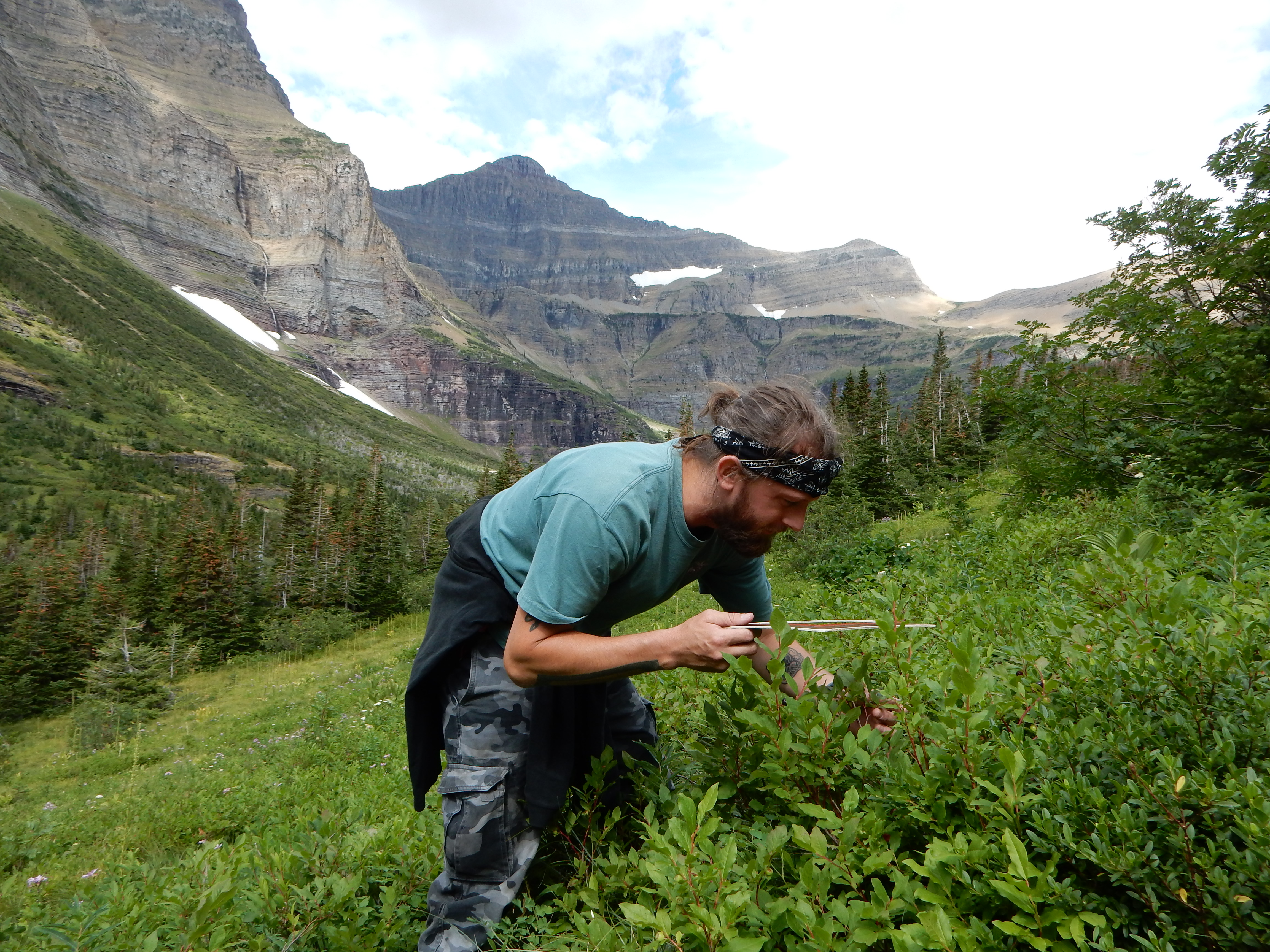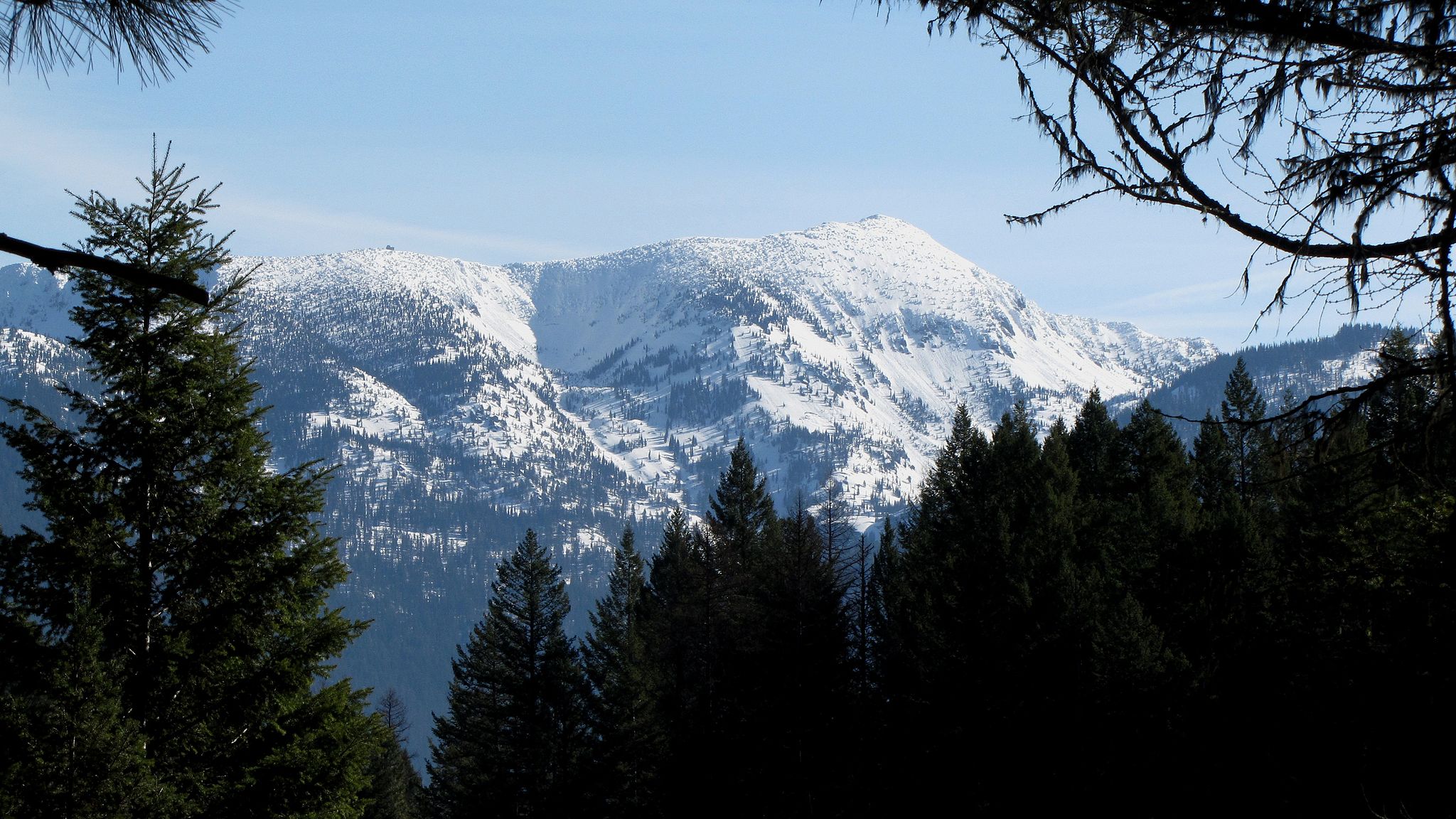Of Brownies, Bears, and Birthdays
By Scott Kania, Earthwatch CEO
Last August, I turned 65 years old. I’m in complete denial about turning old – it’s just a number and all of that stuff. I had no interest in sitting around listening to people remind me of how many birthdays I’d had. When my team told me we needed a couple more people on our new grizzly project, Climate Change, Huckleberries, and Grizzly Bears in Montana, I jumped (or whatever 64-year-olds do to show excitement) at the chance. Luckily, my daughter Kristen had some time before grad school started and wanted to join me. The adventure was on.
I’d been to Montana before, but I’d never heard of Swan Valley. Nestled between the Bob Marshall Wilderness and Mission Range, Swan Valley is a hidden gem away from the tourist madness of Glacier National Park and the recreational buzz of Flathead Lake. As the name implies, there are mountains on both sides of the valley, nearly as breathtaking as Glacier National Park, but much more peaceful and remote.
Our Earthwatch team was small, but spirited. Besides Kristen and myself, there was Sue – an incredibly fit and adventurous woman from British Columbia, who liked her teardrop camper so much, she eschewed a bed in the house and slept there instead. We also had two women from Japan on the team: Yamata and Mei. They were both fun-loving and endlessly curious, and great cooks.

I saw my first grizzly in Glacier on my honeymoon many years ago. Yes, we were in grizzly country on our honeymoon, but that’s a different story. The bear was a ways off across a valley, but slowly heading our way. He was stopping to pull down 20-foot-tall lodgepole pines, and exploring the roots for grubs and ants, I suppose. What a magnificent animal – so powerful and amazingly graceful. We were a safe distance away, so we were able to enjoy watching him forage. Later that day, we made our way back along the same trail. It occurred to me that the bear, continuing on his path, would be intersecting the trail. He was likely to be long gone, but we still did a lot of loud talking and car key jingling, so as not to surprise him. Everyone knows that grizzlies love berries and salmon, but I also think they have an eye for beauty, based on the incredible places they choose to live.
Speaking of berries, according to our researchers, huckleberries are an important food resource for grizzly bears, comprising about 15 percent of their diet in Glacier National Park and surrounding areas. These high-energy fruits are crucial for bears in their effort to gain weight for winter hibernation and reproduction. Changes in climate, however, such as warming temperatures, varying levels of rainfall, increases in insects that damage leaves, and declines in pollinator populations can alter the availability and size of these berries. In the northwestern U.S., climate change threatens to alter the timing and abundance of huckleberries. What remains unknown, however, is which changes in particular will have the most significant impacts and how they interact.

The research we were supporting will help scientists generate maps that can serve as an “early-warning system” for regions that will have low huckleberry productivity in a given year. These “low-productivity” regions may be places where bears and other species need to roam outside of their typical range in search of food. Predicting this movement in advance could help wildlife managers prevent conflict with humans, one of the biggest challenges to bear viability.
As I said, the study site is between two mountain ranges, so while the study sites were in several different locations, all in Swan Valley – even if the actual sites were deep in the woods – the drives to and from had breathtaking views.

Earthwatch lead scientist Dr. Tabitha Graves joined us in the field the first few days of the project. She is totally passionate about her work with grizzlies, and knew absolutely everything about the ecology of the area. She was also very focused on making sure everyone had a good time. Her lead field tech, Jessie, is a recent college grad, wise and mature beyond her years, but with boundless energy and a childlike wonderment about all things in the natural world. You can’t have a bad day when you are with Jessie.
On one of the field days, we did something called an absence/presence survey, which meant that we took a long hike and stopped at 15-minute intervals to look for the absence or presence of various bees, berries, and other bear food sources. It was interesting work, but it didn’t feel like work, since it was actually a gorgeous hike up to a glacial lake at the foot of some rock spires – just like a postcard. The water looked refreshing. No, make that cold. But, that didn’t stop Jessie from jumping in for a swim. She was quickly followed by Mei. I got cooled off from our hike just watching them.
On our way back from the field one afternoon, we wheeled into the general store nearby for ice cream. The sign in front had three words, each starting with a “B” – beer, bait, and something else. It should have been brownies. At the register, they had a tray of freshly made brownies. As an admitted chocoholic I was in heaven. I figured we had earned them, so I bought a bagful. Don’t get the wrong impression. I’m a chocoholic, but not cruel. I shared them with the team. I kind of had to, since they saw me buy them. We all agreed they would have been delicious even without a full day of exercise and fresh air. They also make a terrific birthday cake, especially when sprinkled with delicious huckleberries. It’s always good to go home, but it was really tough to leave this time. We had such a great time with the team and the field crew. I also think I share the grizzlies’ love for beautiful places.
Explore our current expeditions to discover how you can make a difference.